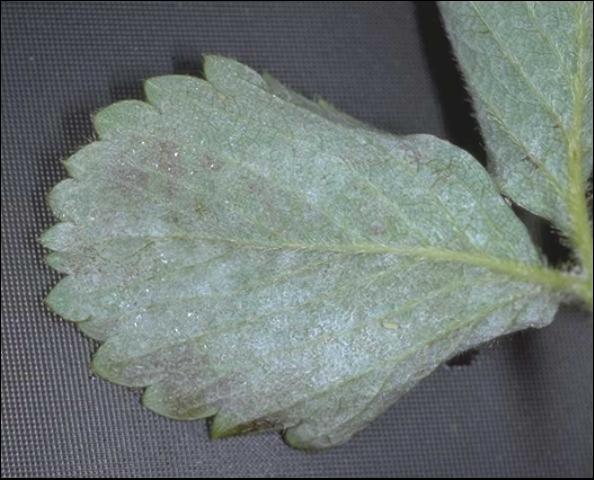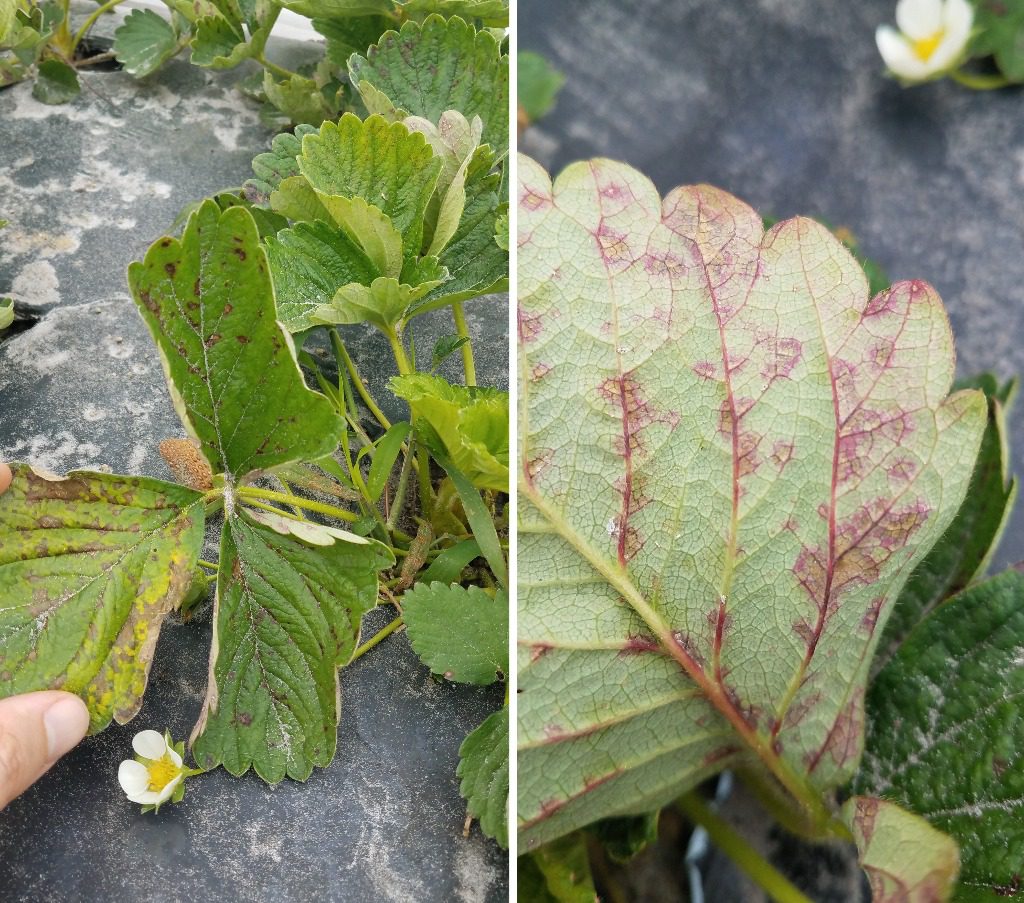
Credit: UF, GCREC
Fall arrived late to Central Florida this year, but strawberry powdery mildew season is right on time. While powdery mildew season tends to run from November to March, November to December tend to be prime months, with pressure reducing in January and early February and sometimes returning in late February through March. Powdery mildew thrives in temperatures that range from 60-80 degrees with higher humidity but no rain, which is why it can be especially difficult to control in high tunnels and greenhouses. However, by November, Central Florida is normally well into its dry season, and while we can expect a wetter winter than usual this year, favorable conditions for powdery mildew growth will open up, and we can expect that next week. Temperatures are forecast to be in the mid-50’s to the lower 80’s, rain should clear out, some clouds should remain, and humidity, as always in this part of the world, will stick around.
Disease-favoring weather conditions don’t mean infection is imminent, but they do mean that you need to pay special attention while scouting to look for symptoms. Powdery mildew gets its name from the white, powdery look of the fungal mycellium, but some strawberry cultivars will not produce much, if any, of this. Instead, the disease may present itself with yellowish or reddish brown leaf spots and cupping, upward turning leaves.

While the best method of reducing the chance of an outbreak is to use mildew-free transplants, this can be difficult to impossible in practice as infected transplants may show no symptoms and growers plant in low-pressure months. Successful control of the disease is highly dependent on how early it is caught, especially when using protectant fungicides like elemental sulfur, so close and regular scouting is critical. For more information on powdery mildew of strawberries, including a list of recommended fungicides, refer to the UF EDIS publication Powdery Mildew of Strawberries.
 0
0
